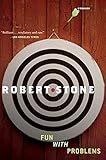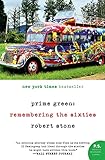 So, lately, I’ve been second-guessing myself. It’s what I do. I’m starting to wonder what kind of writer I am. A short story writer? A novelist? A writer who can do both? I mean, I like novels, I think. They can be fun. I’ve written a few over my writing life. Two were meh but reached their endings. One, I think, is pretty good and is on submission with editors now. The reason I’m saying this is because I just realized I haven’t read one novel over the last year or two. Maybe it’s the pandeezy and long stories just don’t appeal to me at the moment, the fleetingness of life, the state of the world, all that depressing shit. Maybe I just want little diamonds of narrative instead of big glass doorknobs. (Sorry, novels.) Shameless plug: I published a story collection this year (Give My Love to the Savages: Stories, Amistad/HarperCollins) so I’ve been in story collection mode for the last year and a half anyway, editing my collection, studying other collections, trying to live up to my favorites.
So, lately, I’ve been second-guessing myself. It’s what I do. I’m starting to wonder what kind of writer I am. A short story writer? A novelist? A writer who can do both? I mean, I like novels, I think. They can be fun. I’ve written a few over my writing life. Two were meh but reached their endings. One, I think, is pretty good and is on submission with editors now. The reason I’m saying this is because I just realized I haven’t read one novel over the last year or two. Maybe it’s the pandeezy and long stories just don’t appeal to me at the moment, the fleetingness of life, the state of the world, all that depressing shit. Maybe I just want little diamonds of narrative instead of big glass doorknobs. (Sorry, novels.) Shameless plug: I published a story collection this year (Give My Love to the Savages: Stories, Amistad/HarperCollins) so I’ve been in story collection mode for the last year and a half anyway, editing my collection, studying other collections, trying to live up to my favorites.



 So, let’s talk about some rereads: collections I’ve loved and had to revisit while finalizing my book. There’s just something about Natasha: And Other Stories by David Bezmozgis, the stories have the feel of the Bill Buford-era New Yorker stories. I’m old so I guess they scratch a nostalgic itch for me. Same with Pure Slaughter Value by Robert Bingham. There’s a confidence that I admire in the writing, a swag. In Bingham, there’s absurdity and an examination of American masculinity that I dig. To balance that, I’ve loved going back through Middle Men: Stories by Jim Gavin for its readability and its quiet heart and humor. I can sink into these stories, especially the title duo of stories “The Luau” and “Costello.” The Middleman and Other Stories by Bharati Mukherjee and Heads of the Colored People by Nafissa Thompson-Spires inspire me for their creativity and humor and truth serums.
So, let’s talk about some rereads: collections I’ve loved and had to revisit while finalizing my book. There’s just something about Natasha: And Other Stories by David Bezmozgis, the stories have the feel of the Bill Buford-era New Yorker stories. I’m old so I guess they scratch a nostalgic itch for me. Same with Pure Slaughter Value by Robert Bingham. There’s a confidence that I admire in the writing, a swag. In Bingham, there’s absurdity and an examination of American masculinity that I dig. To balance that, I’ve loved going back through Middle Men: Stories by Jim Gavin for its readability and its quiet heart and humor. I can sink into these stories, especially the title duo of stories “The Luau” and “Costello.” The Middleman and Other Stories by Bharati Mukherjee and Heads of the Colored People by Nafissa Thompson-Spires inspire me for their creativity and humor and truth serums.






 Now, onto new books by writers I’ve long admired. I was looking through my book piles and found I had Fun with Problems by Robert Stone and didn’t even know it. I’d gotten my father Stone’s memoir, Prime Green: Remembering the Sixties, as a present and must’ve also gotten this to read later. It’s a slim collection but just as satisfying as Stone’s previous collection, Bear and His Daughter. Another collection that informed mine is Before You Suffocate Your Own Fool Self by Danielle Evans. So, when her new collection, The Office of Historical Corrections: A Novella and Stories, came out, I devoured it. Ever since her first book, I felt I’d found a kindred spirit who was doing what I wanted to do in my writing. And anyone who knows me knows I’m a fiend for Hue and Cry and Elbow Room by James Alan McPherson. These two books are far from new, but they are my talismans. I have every hardback and paperback version of these books. I look at them all the time and keep them around to ward off evil writing.
Now, onto new books by writers I’ve long admired. I was looking through my book piles and found I had Fun with Problems by Robert Stone and didn’t even know it. I’d gotten my father Stone’s memoir, Prime Green: Remembering the Sixties, as a present and must’ve also gotten this to read later. It’s a slim collection but just as satisfying as Stone’s previous collection, Bear and His Daughter. Another collection that informed mine is Before You Suffocate Your Own Fool Self by Danielle Evans. So, when her new collection, The Office of Historical Corrections: A Novella and Stories, came out, I devoured it. Ever since her first book, I felt I’d found a kindred spirit who was doing what I wanted to do in my writing. And anyone who knows me knows I’m a fiend for Hue and Cry and Elbow Room by James Alan McPherson. These two books are far from new, but they are my talismans. I have every hardback and paperback version of these books. I look at them all the time and keep them around to ward off evil writing.



 Some new discoveries this year were Sacred City by Theodore Van Alst Jr., technically a novel-in-stories, however I saw it more as a book of connected stories. Tomato, tomahto. It’s filled with verve and character, “urban Indians” in Chicago, and stories in stories that took me back to Jim Carroll and Junot Diaz and Leonard Michaels and Nelson Algren. Van Alst is on his own time, though, doing his own thing wonderfully. Then there was Black Light: Stories by Kimberly King Parsons, stories that crackle and glow. They’re filled with so many dope writer’s writer details, so many that I’m still jealous of and marvel at that I’ve reread this book three times already. No lie. Same with White Dancing Elephants: Stories by Chaya Bhuvaneswar. These stories don’t follow the usual short story structure or rules or the usual characters. Bhuvaneswar doesn’t care about fitting in. She does what she wants. And finally, there is The Man Who Shot My Eye Out Is Dead: Stories by Chanelle Benz, a book that astonished me with its range. I hadn’t read a book of stories that was so bold and unafraid, that traversed so many times and places and voices.
Some new discoveries this year were Sacred City by Theodore Van Alst Jr., technically a novel-in-stories, however I saw it more as a book of connected stories. Tomato, tomahto. It’s filled with verve and character, “urban Indians” in Chicago, and stories in stories that took me back to Jim Carroll and Junot Diaz and Leonard Michaels and Nelson Algren. Van Alst is on his own time, though, doing his own thing wonderfully. Then there was Black Light: Stories by Kimberly King Parsons, stories that crackle and glow. They’re filled with so many dope writer’s writer details, so many that I’m still jealous of and marvel at that I’ve reread this book three times already. No lie. Same with White Dancing Elephants: Stories by Chaya Bhuvaneswar. These stories don’t follow the usual short story structure or rules or the usual characters. Bhuvaneswar doesn’t care about fitting in. She does what she wants. And finally, there is The Man Who Shot My Eye Out Is Dead: Stories by Chanelle Benz, a book that astonished me with its range. I hadn’t read a book of stories that was so bold and unafraid, that traversed so many times and places and voices.
Finally, as a journal reader, here are some stories that I found online and in print that I loved. Warning to all journals and literary magazines: when you put whole stories up on your website, I’m ganking them shits, throwing them into Word documents before you take them down, so I can enjoy them forever. I’m not a total Napster, though. I subscribe to a number of literary journals, too. Here are some stories I really enjoyed. “Chinese Box” by Bonnie Chau in Bennington Review, “King of the Hill” by Nana Kwame Adjei-Brenyah in Ploughshares, and “Featherweight” by Sterling HolyWhiteMountain in The New Yorker. All three stories are new and subversive and raw and easily surpass the threshold I call art.
More from A Year in Reading 2021 (opens in a new tab)
Don’t miss: A Year in Reading 2020, 2019, 2018, 2017, 2016, 2015, 2014, 2013, 2012, 2011, 2010, 2009, 2008, 2007, 2006, 2005










